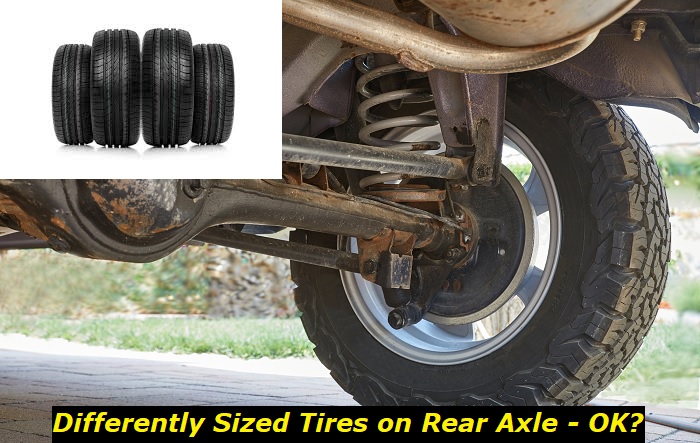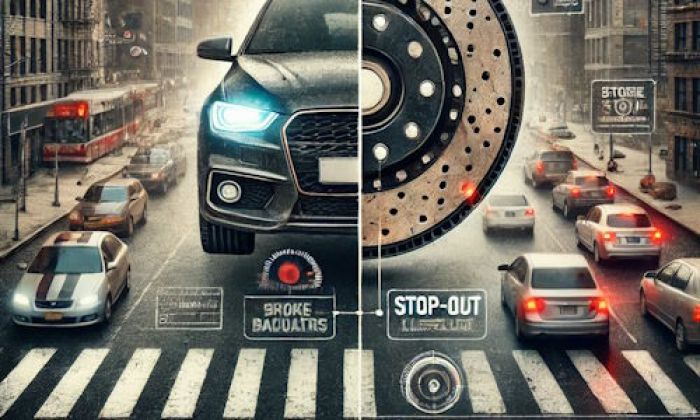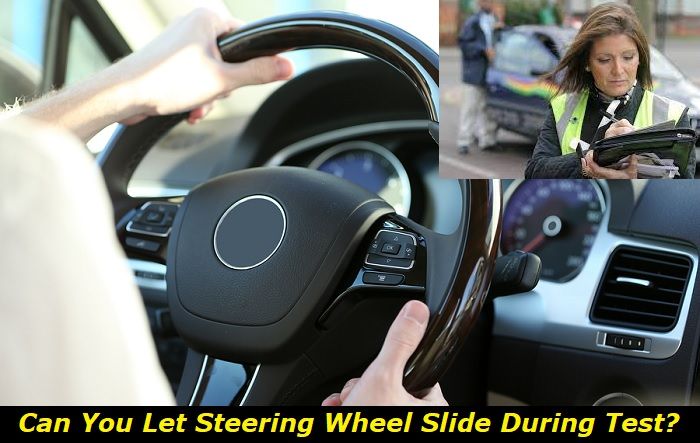When it comes to tires, not all drivers actually understand the importance of their quality and condition. That's why lots of people ask me in comments and direct messages whether having different size tires on the rear axle is an acceptable thing. I'm going to write a full article that will answer this question and show you why it's actually a bad idea.
So, running different size tires in the rear axle is a bad idea and it doesn't matter if you have a rear-wheel drive or front-wheel drive (or even AWD) car. The idea is bad because this can affect your safety, cause tire failure, and also damage some parts of the drivetrain in your vehicle. Read further to learn more about how this may happen.

In this article, I will cover the following:
- How do different size tires affect your driving?
- Safety issues that different sizes of rear tires can cause.
- Damages that may be caused by this situation.
- Is it at all legal to run different size tires on one axle?
- How can you solve the problem without breaking the bank?
Let's get started!
Common effects of different size tires in the rear axle
So, the different size of tires in the rear axle is one of the common questions we get - can you use it? In short, you can, but in emergency situations only when you just don't have any other choice.
When people ask me about this, they usually say that car manufacturers usually put a small-size spare wheel in the trunk of most cars basically legalizing the use of different sizes of tires. But no, this wheel is only meant to help you calmly get your vehicle to the nearest tire service.
So, here's what happens when the tire size is different in the rear axle:
- while one of the rear wheels makes one full rotation, the other may make a little more or a little less;
- for an AWD car, it's a disaster because this will affect the differential;
- also, the RWD car will suffer a lot and you can even lead to fatal damage;
- the vehicle will lose stability and will even bend on one side - you may not notice this, but every millimeter is important;
- your rear suspension will get higher loads and eventually will fail which will cost you more than a suitable tire;
- the handling of your car will change - it may unexpectedly sharply react on any turn of the steering wheel;
- the performance of your vehicle will be affected slightly, so the acceleration may take longer and the fuel economy will get worse;
- when you accelerate or brake sharply, the rear end of your vehicle may swing on the road making your maneuvers dangerous;
- getting into accidents becomes much more real for you, so you will obviously risk your health and even your life.
Is a tire worth it? I don't think so. So, if you were asking this question because you wanted to avoid buying new tires and go another season with two differently sized tires from your old storage, the answer is NO, this is a very bad idea.
But if you need to put a spare wheel that is of a different size to get to the nearest tire service, yes, you can do that. If you have an RWD vehicle, better install the spare wheel of a smaller size to the front axle and the front wheel to get to the rear one. Driving will still be dangerous because of poor handling. So, drive slowly on the right side of the road!
Safety issues - let's discuss them further
So, when your vehicle has different sizes of tires, it can handle poorly. And you may not notice this if you are driving slowly in the city. But when you are in a dangerous situation and need to brake quickly or accelerate immediately to avoid a collision, things change a little. Your differently-sized tire may become the fatal thing, in this case.
Also, if you are driving on a highway, the slight turn of the steering wheel may lead to unpredictable reactions in your vehicle.
Having tires that are of the same size, similar condition, the same tread type, and the same season is crucially important for your safety. I am sure that not only the different size of tires on the rear axle is a bad idea, but even having slightly different conditions of tires is not good. I mean if one tire is older than the other and more worn out, things may still be dangerous for you.
So, to keep yourself safe and prevent collisions and other bad road situations, make sure all tires in your vehicle are in good condition and are absolutely the same (brand, season, tread depth, etc.)
What can be damaged if you run different size tires on the rear axle?
Anything can be damaged in the read axle. But the first thing that comes into my mind is the differential. It's made to work with absolutely the same size of wheels. If you drive a mile or two with a differently-sized wheel in the rear axle, it's not going to suffer a lot. But if you drive every day like this, the differential will die in a month or two and it costs a fortune!
Also, the tire wear will not be the same. The smaller wheel will get more loads and the tire will wear extensively. It means that you will most likely experience tire damage on your way which is not a pleasant thing at all.
Your rear suspension will be under bigger loads because of wrongly sized tires. Struts and shock absorbers may be worn out after a couple of months. Also, the damage will depend on the type of rear suspension. At least, some bushings and rubber parts will be damaged quite quickly and will require replacement. The overall price for parts and labor may be higher than the price of a pair of good tires.
Is it legal to run different sizes of tires in your car?
I couldn't find any special laws or regulations that don't allow you to drive with different sizes of tires. But I also don't know for sure if you will be able to pass the technical inspection on your vehicle. The safety of driving depends on the tires, so I believe inspectors will have to react somehow if they locate this issue in your vehicle.
But if you want proper safety and quality of driving, make sure that both pairs of tires are equal. Your rear tires may have some mismatches with your front tires, but every axle should have the same type of wheels. Otherwise, your safety and comfort are not guaranteed.
Also, if you get into an accident where it's hard to understand whose fault led to the crash, your mismatched tires may become one of the reasons police will blame you. Of course, this also depends on the state you are in.
How can you solve this problem without spending too much money?
Solving this issue may seem too expensive to you. The only reasonable thing you may consider is buying a couple of new tires to put on the rear wheels of your vehicle. And this is the optimal solution but it may cost you a lot. So, I'm going to give you some ideas on how you can save money and still be safe on the road.
Here are some of the unusual ways to get two equal tires for your vehicle:
- Look for one tire that will fit one of the pair you are having. Maybe, you can find just one tire that will fit one of the two tires you have on your rear axle. This will cut your expenses twice.
- Search for used tires online. On eBay or some other websites like that, you can look for used tires. Finding a decent pair of tires with the optimal size for your vehicle won't be too hard. And you can buy them way cheaper than new ones.
- Get used tires from scrapyards. Sometimes, cars get to scrapyards after accidents and their tires may be still in good condition. Buy a couple or the whole set of tires and pay just a little money for it.
- Ask other owners of similar cars whether they have old tires. These old tires may still be in good condition and much better than your unmatching pair. Some guys will even give you these old tires free of charge.
You may even come up with your own ideas on where you can buy cheap tires, new or used. But the thing is that getting a good pair of tires will not be as difficult as you may think. This will obviously make you spend much less money than you would spend if you got into a car accident on the road because of bad tires on your rear axle.
Final thoughts
So, my answer to the question if you can drive with different size tires on the rear axle is obviously NO. This is only acceptable if you need to use a spare tire and you should be extremely careful, in this case. The best thing is to make sure your tires are OK for the new season and change them if they don't seem to be healthy enough to let you drive the vehicle for at least half a year.
About the authors
The CarAraC research team is composed of seasoned auto mechanics and automotive industry professionals, including individuals with advanced degrees and certifications in their field. Our team members boast prestigious credentials, reflecting their extensive knowledge and skills. These qualifications include: IMI: Institute of the Motor Industry, ASE-Certified Master Automobile Technicians; Coventry University, Graduate of MA in Automotive Journalism; Politecnico di Torino, Italy, MS Automotive Engineering; Ss. Cyril and Methodius University in Skopje, Mechanical University in Skopje; TOC Automotive College; DHA Suffa University, Department of Mechanical Engineering






Add comment